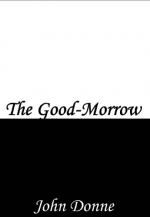
|
| Name: _________________________ | Period: ___________________ |
This test consists of 15 multiple choice questions and 5 short answer questions.
Multiple Choice Questions
1. Line 10, "For love, all love of other sights controls," contains an example of which technique?
(a) Epistrophe.
(b) Polysyndeton.
(c) Diacope.
(d) Parallelism.
2. What does the phrase "'Twas so" in line 5 mean?
(a) It creates a shift in time, indicating that lines 5-7 take place in the future.
(b) It introduces the logical consequences of the ideas offered in lines 1-4.
(c) It confirms that the possibilities outlined in lines 1-4 were actually true.
(d) It makes clear that the whole stanza is hypothetical, not a reality.
3. In line 1, the speaker uses the word "troth." What does this word mean in this context?
(a) Soul, or life force.
(b) A sincere question.
(c) Religious faith.
(d) A pledge of honesty.
4. Which techniques are seen in line 15, "My face in thine eye, thine in mine appears"?
(a) Alliteration and antithesis.
(b) Assonance and internal rhyme.
(c) Consonance and inversion.
(d) Sibilance and euphony.
5. In line 14, "Let us possess one world, each hath one, and is one," what two things are being compared?
(a) The lovers and worlds.
(b) Maps and worlds.
(c) Explorers and worlds.
(d) Poetry and worlds.
6. Line 11, "And makes one little room an everywhere," contains an example of which technique?
(a) Synesthesia.
(b) Irony.
(c) Hyperbole.
(d) Antithesis.
7. Which term best describes the rhyming in lines 13 and 14, "Let maps to other, worlds on worlds have shown,/ Let us possess one world, each hath one, and is one"?
(a) Identical rhyme.
(b) Slant rhyme.
(c) True rhyme.
(d) Eye rhyme.
8. The mention of the Seven Sleepers in line 4 is an example of which technique?
(a) Oxymoron.
(b) Allusion.
(c) Synechdoche.
(d) Simile.
9. What is the best interpretation of the meaning of "but this" in line 5?
(a) "However, when you consider what I am saying."
(b) "On the other hand, the poem I am writing."
(c) "Although pleasure is wonderful."
(d) "Except for our relationship."
10. What is the dominant meter of this poem?
(a) Trochaic pentameter.
(b) Trochaic hexameter.
(c) Iambic hexameter.
(d) Iambic pentameter.
11. Lines 12-14, "Let sea-discoverers to new worlds have gone,/ Let maps to other, worlds on worlds have shown,/ Let us possess one world, each hath one, and is one," contain an example of which technique?
(a) Anaphora.
(b) Onomatopoeia.
(c) Cacophony.
(d) Antimetabole.
12. Who is the author of "The Good Morrow"?
(a) Andrew Marvell.
(b) George Herbert.
(c) John Donne.
(d) Henry Vaughan.
13. How many lines does "The Good-Morrow" contain?
(a) 21.
(b) 28.
(c) 23.
(d) 26.
14. What does the speaker say is "waking" in line 8?
(a) His mind.
(b) His and his lover's hearts.
(c) His desire.
(d) His and his lover's souls.
15. How many additional syllables does the final line in each stanza contain?
(a) 1.
(b) 4.
(c) 2.
(d) 3.
Short Answer Questions
1. What is the time of day in this poem's setting?
2. What is different about the poem's first two and last two lines?
3. What do the poem's final three lines suggest is true about the speaker's and his lover's relationship?
4. Which technique is used repeatedly in the first quatrain?
5. Which term describes the use of the word "beauty" in line 6?
|
This section contains 534 words (approx. 2 pages at 300 words per page) |

|




